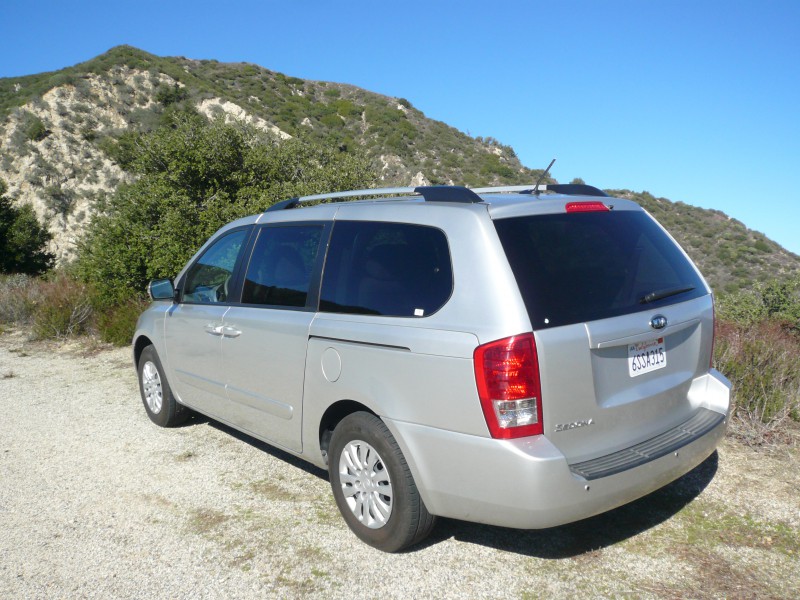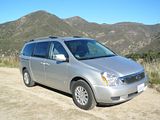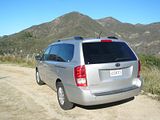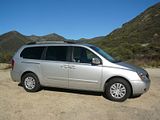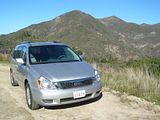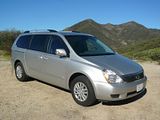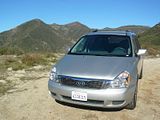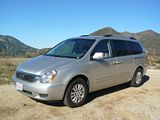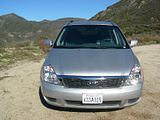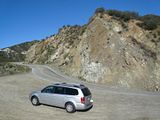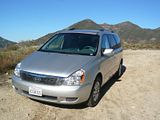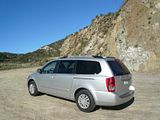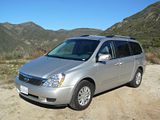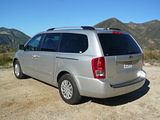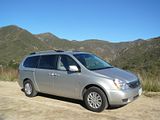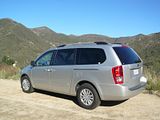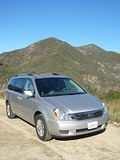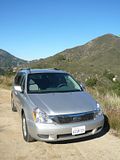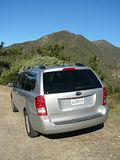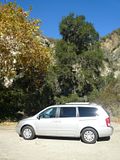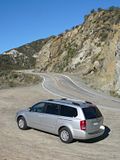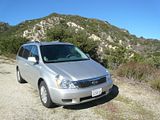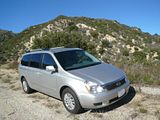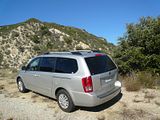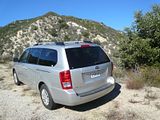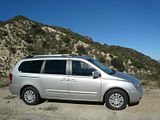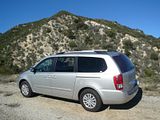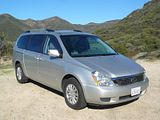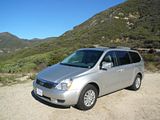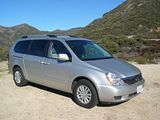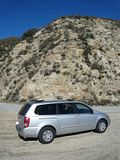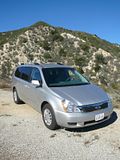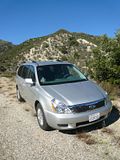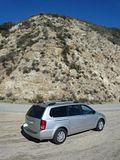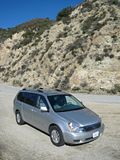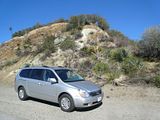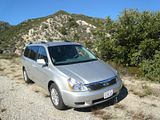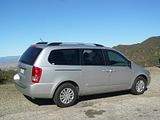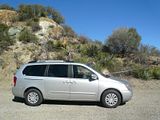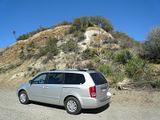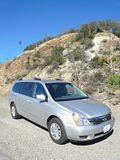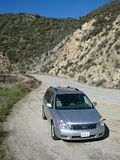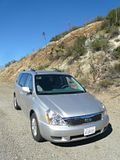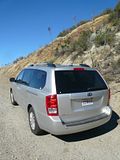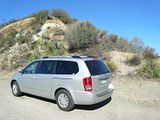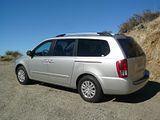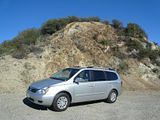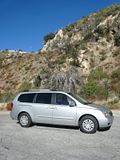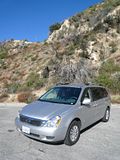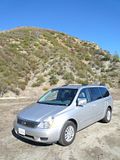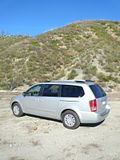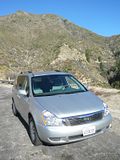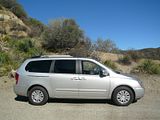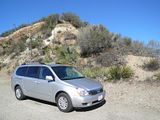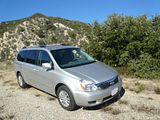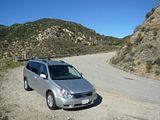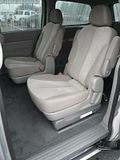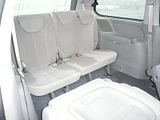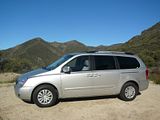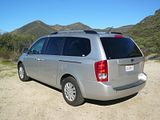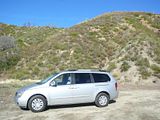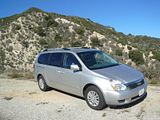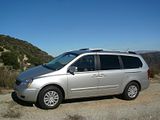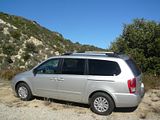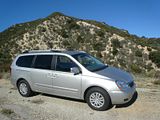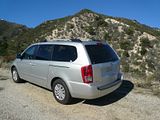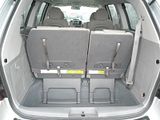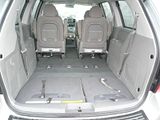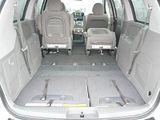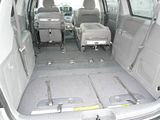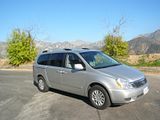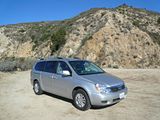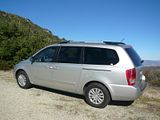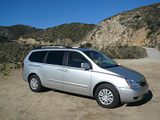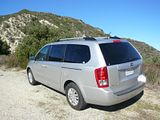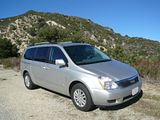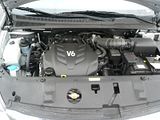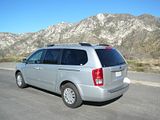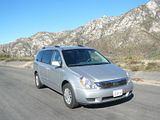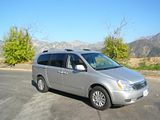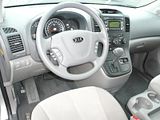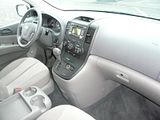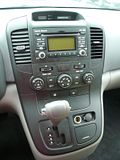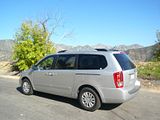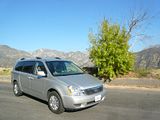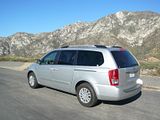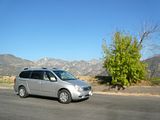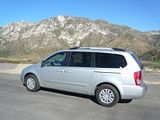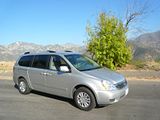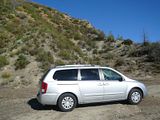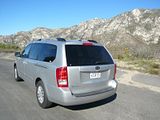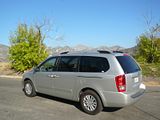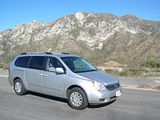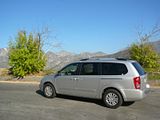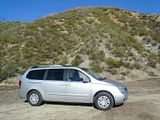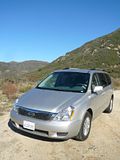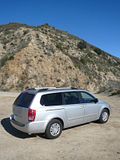Much has been written about the meteoric rise over the past few years of Korean marque Kia, and it is certainly the case that this has largely been fuelled by a seemingly never-ending series of new models, as well as an expansion of what initially was a pretty limited range of products into one which reaches into most of the significant market sectors. Almost without exception each new product has been significantly better than the last, so it is hard to put one’s finger on precisely which model it was which first made people sit up and take notice of a brand which when launched in western markets was renowned for making some rather insipid products. You could put together a strong argument to say that it was not one of the small cars for which the brand is still well known, but an offering at the top end of the range, the commodious Sedona MiniVan, a vehicle known also as the Carnival in Continental European markets. First launched at a time when a large 7 seater “people carrier” was just what many families were looking for, the Kia was a pretty decent offering that undercut the rather pricey Renault Espace that had defined the genre in Europe and the Toyota Sienna and Dodge/Chrysler Caravan/Voyager/Town & Country by a sufficiently large amount of money that customers were forced to take notice. Sales took off in Europe with both private customers and cab operators alike finding much to like, and in the US it quickly became the brand’s best seller. The first Sedona was far from perfect, trading space and value for refinement and still with a quintessentially old-school plasticky interior, but ever quick to raise standards, Kia addressed most of that with the second generation model which premiered in 2005. First available in the US for the 2006 model year, it was broadly the same as the models sold in Europe, though the Americans were offered a choice of standard and long wheelbases, and from 2007 to 2009 an almost identical model called the Hyundai Entourage. A mild facelift was introduced for the 2011 model year cars, with the characteristic Schreyer “tiger nose” grille finding its way onto the Sedona, along with the replacement of the old Hyundai V6 engine with a more modern unit. The short wheelbase model, the car sold in Europe, was deleted as most American customers wanted the longer model.
A vehicle like this needs to score highly in practical matters, and the Sedona certainly does well here. All models have 7 seats, trimmed in a tough cord like material. The middle row comprise a pair of “captain’s chairs”, large individual seats which may well be even nicer than those furnished for the front seat occupants. With armrests on both sides of the seat, and an adjustable backrest, they seemed very comfortable from my brief test sitting on them, and there’s masses of leg and head room for their occupants. Behind these is a third row which whilst far less accommodating in all dimensions would prove perfectly acceptable for most adults, which is not always something that can be said about third rows. Access to this row is relatively easy as the middle row of seats can be tipped forward leaving quite a wide area through which the passenger can clamber in.
Where a lot of 7 seaters struggle is to provide any meaningful luggage space when all the seats are erected. For sure there is not that much length to the Sedona’s boot area, but it is extremely deep, reaching down well below the top of the bumper line, so as long as you can nile items up high, there is a decent amount of space. The rear most row of seats are asymmetrically split, and fold down in two movements by pulling on the straps on the seat backrest, which initially drop the backrest then allow you to swivel the whole seat down and into the rearmost boot floor, creating a load area which is now flush with the bumper line. With just the rearmost row folded down there is now a vast boot area, but this can be increased still further by folding down the middle row as well, or if you have the time, by removing the seats completely. These seats can be folded do that the backrest is on top of the cushion, of they can be tipped forward. Either way, you get a considerable further increase in luggage space. There are plenty of other practical touches in the cabin, with a large tray fitted between the front seats, which can be swivelled down out of the way if you wanted to put something tall between the seats or perhaps even allowing you to access the passenger compartment from inside the vehicle. In addition to this, there is a decent glovebox, door pockets and a large cubby area on the lower part of the centre of the dash. Rear seat occupants get pockets in the back of the seats and door bins on the rear doors. Cup holders abound. It is clear that Kia have thought about the needs for the occupants whether they are parents and lots of children or a larger number of adults.
Most vehicles of this type these days score highly on the practical stakes, but tend to struggle a bit more on the driving characteristics, which is one reason why the market has moved away from MiniVans and SUVs towards the Crossover type machine. It is fair to say that the Sedona does not exactly score in the “driving fun” category. Whilst European sales tended to be of diesel powered models, the US market still demands petrol, and for the 2011 model year Kia replaced the old 3.8 litre unit with the more modern and more potent 3.5 litre V6 engine that also sees service in the Sorento. It develops 271 bhp which is class competitive and ample to move the Sedona without undue difficulty. Indeed, one up, as you set off, the powerplant feels like lusty, and although it remains quite smooth, as you work it harder it can get quite noisy. The Kia has a 6 speed automatic transmission, which went about its business so you barely knew it was there. The gear lever is mounted up high on the dashboard where it falls readily to hand, and although there is a manual mode operated by flicking the lever back and forth, you will probably leave it to work things out for itself. I only had the Sedona for a day, and it spent some of the time on the canyon roads up above Los Angeles. When I filled it up on return, and did the maths, fuel consumption computed as 22.8 mpg US, or 27.2mpg Imperial, a reasonable figure for a large and heavy machine.
Whilst the engine acquits itself decently enough, it is the other driving characteristics which can make the difference between the car-like experience of the Odyssey, or the completely sensation-less Toyota Sienna. The Kia sits somewhere between the two. The steering is relatively light, but it does have some feel, unlike the Toyota, though it seemed to get lighter as you put on more lock, which is fine for parking and low speed manoeuvering, but not so good for twisty roads. Not that you are going to tackle those with particular gusto as this is quite a large and tall car with a relatively high centre of gravity, so it is not a car whose handling will engender much in the sense of fun. Drive it in accordance with its prime purpose of moving people and their stuff and you will have no issues, but try to press on a bit on twisty roads and the understeer and body roll will quickly encourage you to take it a bit easier. The brakes seemed well up to the task. There is a foot operated parking brake. The relatively soft suspension and long wheelbase mean that the Sedona rides well, with the Kia taking the worst off the ridges and bumps of the poorly surfaced Los Angeles roads. This is a big car and you need to remember that when parking it. There is a lot of glass, so overall visibility is good, though like most vehicles these days, you cannot see exactly where the front ends. There were parking sensors to help you to judge the relative position of the rear of the Sedona and any obstacles which you need to avoid.
Kia interiors have improved out of all recognition in recent years. That in the Sedona is a reminder of the standard they were achieving when this model was first released on the market, so in comparison with the more recent offerings in the range, it seems somewhat “old school”, but compared to what went before, it was deemed a vast improvement. Hardest thing to accept is the plastic steering wheel which was neither particularly nice to look at or to hold. The rest of the cabin, mostly trimmed in less than 50 shades of grey comprises rather too much in the way of hard plastics, which whilst doubtless very serviceable and durable do not give it up a particularly upmarket look. There are three dials in an ovoid shaped cluster, with central speedometer flanked by a rev counter on the left and a dial on the right containing fuel level and water temperature. All are clearly marked and easy to read. Twin column stalks operate the lights, indicators and wipers. The central panel in the dash contains the audio unit flanked by central air vents, and the rotary dials for the air conditioning system. They are mounted up high and are easy to reach. Repeater buttons for some audio unit functions as well as the cruise control are on the steering wheel boss. It is all very neat and easy to use, but just feels and looks a bit low rent.
In the US, Kia offer the Sedona in LX and EX trims. Standard on all models are rear-obstacle detection, rear air conditioning with separate controls, remote keyless entry, and Bluetooth wireless cell-phone link. The EX adds electrical adjusted front seats, power assisted opening and closing for the sliding rear side doors, a rearview camera, and a power operated tailgate. The power sliding rear doors are available as part of a Power Package on the LX. EX versions can be equipped with a Luxury Package that includes tri-zone automatic climate control, leather upholstery, heated front seats, power-adjustable pedals, driver’s seat memory, and an electric sunroof. The EX’s Premium Entertainment Package adds rear DVD entertainment and an Infinity-brand audio system. The DVD system is offered as a standalone option on the LX. A navigation system is optional on the EX, but models so equipped cannot be ordered with the Premium Entertainment Package. The LX lists at $24,900 and the EX at $29,190.
I handed the Sedona back concluding that whilst this is absolutely not a car for the enthusiast, it does exactly what you might want and hope for in a vehicle of this type. It is not at the top of the class, I suspect, as assuming that the latest Honda Odyssey carries on where its predecessor left off, it achieves that accolade as it is surprisingly car-like to drive as well as utterly practical. Everything I have read suggests that the rather awkward looking Nissan Quest is also very impressive. There are those who rate Toyota’s big selling Sienna, too, though my experience with the last one and its alarmingly vague steering was enough for me not to be able to recommend it, and then there are the Dodge/Chrysler ‘Vans and their VW Routan alter ego which are also much improved after the post Fiat acquisition interior upgrades and the latest V6 engine. However, if you ignore the bargain basement entry level price of the poverty spec Dodge Caravan SE, and the fact that the cheaper Toyotas have a 4 cylinder engine, all of these vehicles list for considerably more money, with the Dodge and Toyota costing at least $2000 more for a comparable spec and the Honda adding nearer $4000 to the bill. On that basis, the Kia can still play the value card. 2012 was the last year for the model in the US market, and there is some uncertainty whether it will be directly replaced, or whether the smaller Carens/Rondo, a new version of which premiered at the 2012 Paris Show will be deemed to suffice.

